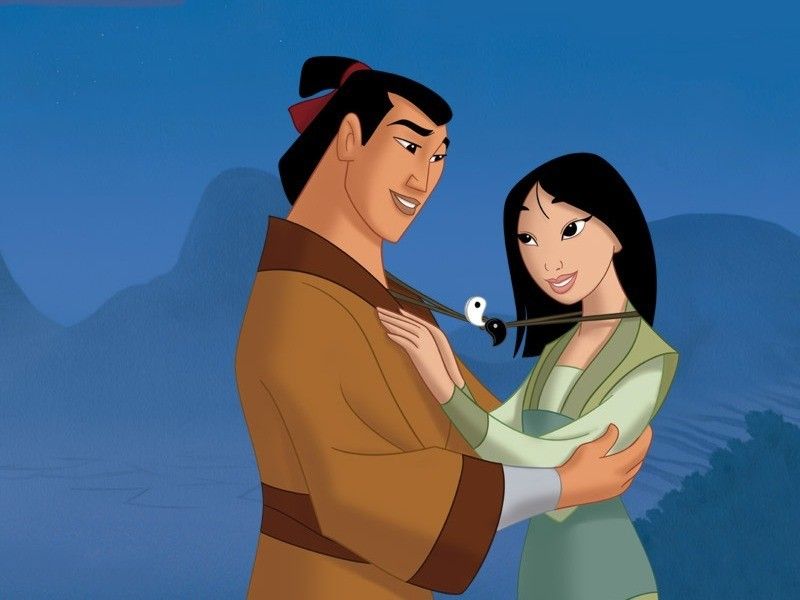Disney Princes and Princesses Still Slaves to Some Stereotypes

While women may be shedding some of their traditional gender roles, the pretty pink princess culture still abounds in the media and in merchandise aimed at young girls. Meanwhile, scientists now find that Disney princesses have evolved over time to be less stereotypically "pink," while Prince Charming has lost some of his manly muscle.
But both characters have a ways to go before they transform into healthy boys and girls unburdened of negative gender stereotypes, the researchers say.
"A lot of parents consider Disney high-quality family entertainment, and in a way it is, but when you examine some of the earlier princesses more closely, you do find some of the stereotypical gendered behaviors," said study researcher Dawn England of Arizona State University.
This is something all parents have to deal with, said Peggy Orenstein, author of "Cinderella Ate My Daughter" (Harper Publishing, 2011), an examination of the gendered messages sent to little girls through pink and princess marketing.
"When my daughter was 4 and we watched 'Mulan 2,' she asked why Mulan had to be strong and gentle but Shang only has to be strong," she said in an email to LiveScience. "I think we’re still uncomfortable with a strong female character unless she exhibits some pretty traditional submissive behavior along with her strength."
These gendered messages — such as the need for girls to look pretty and focus on their appearance over their inner substance — are still predominant in Disney princess merchandise and the pink princess culture that surrounds it.
These gender roles and how they are portrayed in the media can influence girls' expectations and ideas of what is "normal" behavior for their and the other gender.
Sign up for the Live Science daily newsletter now
Get the world’s most fascinating discoveries delivered straight to your inbox.
"My intention is not to say that the Disney princess movies are all bad or a negative influence on our children, but it is important to consider what messages our children are exposed to," England told LiveScience.
Girly girls
England and her team analyzed the main characters in each of the Disney princess movies for signs of traditional gender roles, such as males being physically strong, assertive and athletic, and females being prone to overt emotion, including affectionate behavior and collapsing into tears.
They separated the movies into three time periods: those made before 1960, including "Snow White," "Cinderella" and "Sleeping Beauty”; those of the 1990s, including "The Little Mermaid," "Beauty and the Beast" (focusing on Belle), “Aladdin" (featuring Jasmine), "Pocahontas" and "Mulan"; and the period since, namely "The Princess and the Frog" (featuring Tiana).
These films span over 70 years of family entertainment. The lead female characters in the earlier movies showed very stereotypical feminine traits. The later female portrayals, including those of Mulan and Pocahontas, included more traditionally masculine traits.
"They tended to their physical appearance a lot, and they were referred to as ‘pretty’ a lot. That was an important character trait for the princesses," England said. "But little girls typically don't play Mulan or Pocahontas, not in their warrior costumes."
Girly guys
While the princesses became less feminine, the princes seemed to shed their machismo and show more of their girly side over time.
In the older movies, the princes were noticeably absent and had few characteristics that could be coded, but those that were showed were stereotypically masculine traits. The male characters in newer movies are progressively more androgynous, displaying many traditionally male and female gender roles, England said. They are much more likely to show traditionally feminine qualities such as emotion and affection, their top two character traits.
Surprisingly, the princes in two of the recent movies, "Mulan II" and "Pocahontas," are among the more masculine in the series, and these movies also have athletic and manly princesses. "Then we have movies like 'Aladdin,' where I think that prince is a much more complex character and not as traditionally masculine," England said. [5 Myths About the Male Body]
The character progression in the princes seems to continually straddle the line of traditional and more androgynous characteristics. In the most recent movie, "The Princess and the Frog" from 2009, the frog prince, Eadric, is portrayed as a bit incompetent, naïve and unable to support himself. Both Eadric and Aladdin show more feminine than masculine traits.
Princess culture
The princess culture is a very integral part of a young girl's life. "Most girls in the U.S. are very interested in princesses and playing princesses," said England. "The only way they are learning about this is by watching television,” including the Disney movies.
Certain parts, including the romantic scenes, of the earlier (and most popular) movies, such as “Cinderella” and “Snow White,” could be worrisome for parents, England said. "Often the prince selects the princess and she falls in love obligingly in a few days," England said. "It's not until the later movies where they actually spent a lot of time together before they fell in love."
Orenstein notes that the products that go along with the movies also play an important role in the gender messages girls receive. "The most popular princesses are the ones with the most bling. The products really are less about raising little princesses than raising vain, spoiled step-sisters," she told LiveScience in an email. "You never see Cinderella in her humble rags, do you?"
You can follow LiveScience staff writer Jennifer Welsh on Twitter @microbelover.
Jennifer Welsh is a Connecticut-based science writer and editor and a regular contributor to Live Science. She also has several years of bench work in cancer research and anti-viral drug discovery under her belt. She has previously written for Science News, VerywellHealth, The Scientist, Discover Magazine, WIRED Science, and Business Insider.



